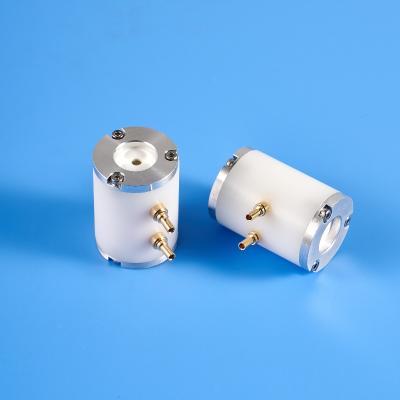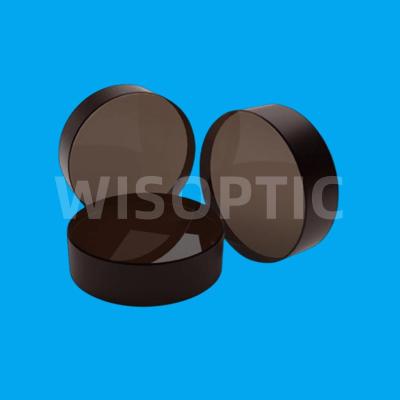Preparation of Nd:YLF Raw Materials by Melting Method and Study on Their Crystal Growth and Properties - 01
Research Background
Lithium Yttrium Fluoride (LiYF4, YLF) crystal has many excellent properties such as low melting point, low phonon energy, small thermal lens effect, natural polarization, etc. It is a laser matrix material with excellent performance. YLF belongs to the tetragonal structure of scheelite, and the space group is I41/a. Y3+ ions are easily replaced by other trivalent rare earth luminescent ions (RE3+=Nd3+, Yb3+, Er3+, Pr3+, Ce3+, Dy3+, etc.) to form RE:YLF laser crystals without the need for charge compensation, and can achieve output in different bands from ultraviolet to mid-infrared. Among them, Nd:YLF is an important near-infrared band laser crystal, which has important applications in laser fusion, laser medical treatment, laser processing and other fields. In recent years, it has become one of the hot spots in laser crystal research.
There are many methods for growing fluoride laser crystals, such as the Czochralski method, the crucible descent method, the epitaxy method, and the zone melting method. In these growth methods, commercially available binary compounds YF3, LiF, and rare earth REF3 are usually used as initial growth materials. Since binary fluoride raw materials are extremely sensitive to oxygen and moisture in the environment, they are very easy to react with them to form fluoride oxides with high melting points during the preparation of raw materials and crystal growth. During the crystal growth process of the Czochralski method, they float on the surface of the RE:YLF melt, making it difficult for the crystal to grow normally, and they are easy to grow into the crystal to form inclusions, affecting the quality of the crystal. In the early days, some researchers used high-temperature fluorination treatment to synthesize lithium yttrium fluoride polycrystalline materials, but because it was a solid-phase synthesis, the reaction could not be complete, and there were problems such as small single synthesis amount and HF gas pollution. Fortunately, the YLF crystal phase is very stable and not easy to react with water and oxygen. Therefore, the development of high-purity RE:YLF crystal phase polycrystalline raw material preparation technology is one of the key factors to achieve high-quality crystal growth. In recent years, there have also been reports on the use of hydrothermal methods to prepare fluoride micro-nanocrystalline materials, which have the advantages of simple preparation methods and high crystal phase purity and can be used for crystal growth. However, the amount of raw materials prepared at a time is small, which is not conducive to mass production. The growth atmosphere is an important factor affecting the growth of YLF series crystals. In early studies, gases such as Ar and N2 were used as crystal growth atmospheres, but due to the presence of fluorides or fluoride oxides in the raw materials used, as well as trace amounts of O2 and moisture remaining in the furnace, the problem of floating objects was difficult to overcome. The use of HF gas can effectively overcome the formation of floating objects, but it is very corrosive to the crystal growth system. Recently, CF4 gas or a mixed gas of Ar and CF4 with less corrosiveness has been used as the growth atmosphere, but there is still a problem of damage to auxiliary equipment such as the vacuum system of the single crystal furnace, which is not conducive to the stable growth of crystals and the reduction of costs.
This study used an innovatively designed nearly closed melting device, combined with high-temperature melting and floating object salvage technology, to achieve full melting reaction of raw materials and full salvage of floating objects, and obtain high-purity Nd:YLF crystalline phase polycrystalline raw materials; and carried out crystal growth in a high-purity Ar atmosphere to obtain complete crystals. The segregation coefficient of Nd3+ ions in the crystal was tested, and X-ray powder diffraction analysis (XRD), X-ray rocking curve (XRC), absorption spectrum and fluorescence spectrum were characterized and analyzed. This study provides a new way to achieve the growth of high-quality and low-cost yttrium lithium fluoride series crystals.



